Fujifilm FinePix S3 Pro camera shown in this review and lens Nikon 50mm 1: 1.8D AF Nikkor (MKIII) Radozhiva was presented by Sergey Gordubey. From Evenkia (north of the Krasnoyarsk Territory) the parcel with the equipment went for more than a month. I express my deep gratitude to Sergey for such project assistance. Camera and lens were sold and funds credited here.
Fujifilm FinePix S3 Pro is legendary digital SLR camera, which was introduced back in 2004, but is still appreciated by many photographers to this day. The main strength of the camera is a special matrix - Fujifilm SuperCCD SR II, consisting of two types of photodiodes arranged in a special way and allowing to achieve a large dynamic range and excellent color reproduction. The very name of the matrix 'Fujifilm SuperCCD SR'already hints at dynamic range, where' SR 'is'Super dynamic Range '-' Super Dynamic Range '. How the SuperCCD SR matrix is arranged and functions can be viewed here.
Fujifilm SuperCCD technology was introduced in 1999 and has three generations: SuperCCD I, II, III. In 2003, with the release of the fourth generation of sensors, the technology branched out into SuperCCD HR (high resolution) and SuperCCD SR (high dynamic range). SuperCCD HR technology has survived to its eighth generation (counting from the beginning), while SuperCCD SR has only been updated to SuperCCD SR II once. In 2008 SuperCCD HR and SuperCCD SR technologies were merged and upgraded to SuperCCD EXR. In 2011, Fujifilm ditched the SuperCCD EXR with its special shape and sub-pixel arrangement. CMOS technology, with its conventional Bayer pattern, won, but the experiments did not end there - Fujifilm can still surprise with something unusual in our time :).
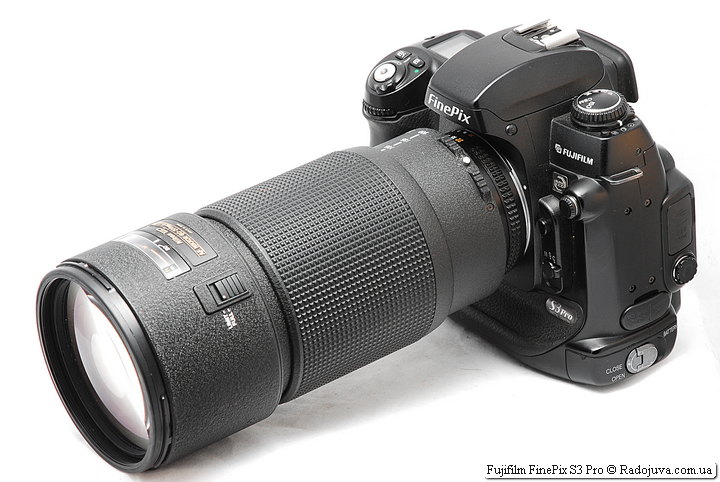
Fujifilm FinePix S3 Pro with lens Nikon ED AF Nikkor 80-200mm 1: 2.8D (MKII)
Below is the evolution of the Fujifilm FinePix CZK:
- Fujifilm FinePix S1 Pro - January 2000, based on the film Nikon F60 (aka Nikon N60), the first generation SuperCCD. Matrices for the Fujifilm FinePix 4700 Zoom and 4900 Zoom compacts were manufactured using the same technology.
- Fujifilm FinePix S2 Pro - January 2002, based on the film Nikon F80 (aka Nikon N80), SuperCCD III (the matrix third generation) Fujifilm F601 Zoom, S602 Zoom, and M603 compact matrices were manufactured using the same technology.
- Fujifilm FinePix S3 Pro - February 2004, based Fujifilm FinePix S2 ProSuperCCD SR II matrix (second generation SR matrix)
- Fujifilm FinePix S3 Pro UVIR - August 2006, upgraded Fujifilm FinePix S3 Pro for shooting in IR (Infra Red) and UV (Ultra Violet) spectra.
- Fujifilm FinePix S5 Pro - September 2006, based Nikon D200, a slightly upgraded SuperCCD SR II matrix (similar to the one installed on the Fujifilm FinePix S3 Pro).
- Fujifilm FinePix IS Pro - June 2007, Revamped Fujifilm FinePix S5 Pro for shooting in IR (Infra Red) and UV (Ultra Violet) spectra.
Yes, that's right, there is no intermediate model between S3 Pro and S5 Pro because in the east they do not like the number 4. All Fujifilm FinePix SLR cameras have an APS-C type sensor with crop factor 1.5 X, and are analogues of cameras Nikon DX.
Fujifilm FinePix SLR cameras have omitted the use of first-generation SuperCCD SR arrays, which were used by the Fujifilm F700, F710 and S20 Pro compacts. And also missed the second generation SuperCCD, which were the Fujifilm Finepix 6800 Zoom and 6900 Zoom.
All Fujifilm FinePix SLR cameras were built on the basis of Nikon DSLRs, both film and digital, and therefore have a Nikon F mount and are compatible with Nikon lenses and other add-ons (flashes, remote controls, boxes, etc.).
Until the first digital SLR camera Fujifilm FinePix S1 Pro Nikon and Fujifilm also collaborated and produced quasi full-format digital SLR cameras Nikon E / Fujifilm Fujix DS.
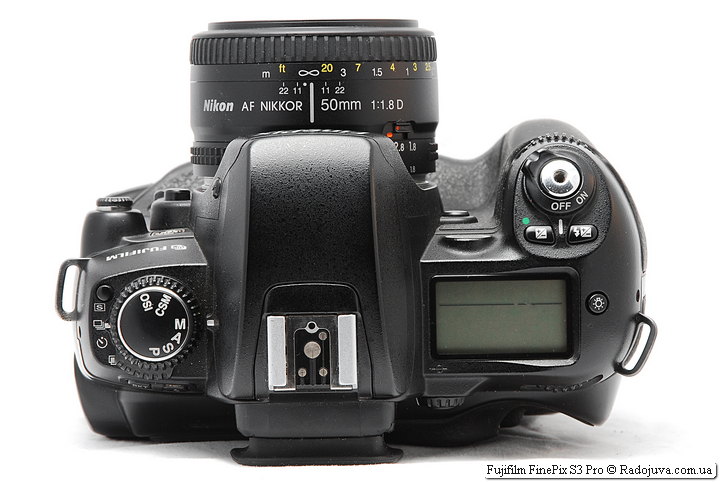
Fujifilm FinePix S3 Pro with lens Nikon 50mm 1: 1.8D AF Nikkor (MKIII)
Chassis S2 Pro and S3 Pro (from this review) is built on the basis of the Nikon F80 film SLR camera (for America it was produced under a different name - Nikon N80). A camera is built on the basis of the same camera. Nikon D100... In my opinion, due to the unfortunate main command dial with which ISO is selected and custom CSM functions, all of these three cameras are - S2 Pro, S3 Pro and D100 they have the worst control of all the digital cameras with Nikon mount I have ever used.
S3 Pro, like Nikon D100 and S2 Pro, uses a focus system Multi-cam 900 by 5 focus points, the center point is cruciform. Responsible for exposure 10-segment SPD sensor... The ISO range is small - from 100 to 1600 units, you can select ISO values 100, 160, 200, 400, 800, 1600. Functions Auto ISO not on the camera. Minimum excerpt shutter - 1/4000 s, and excerpt sync with flash is 1/180 s. The camera is designed to use old flashes that work in automatic D-TTL mode. Modern flashes will not work with S3 Pro in TTL or I-TTL mode. And it’s also very inconvenient that the value excerpts and apertures are changed only by half-stops (step 0.5 EV).
Too bad Fujifilm FinePix S3 Pro does not support auto metering exposure with lenses without CPU contacts (i.e. manual).
The S3 Pro uses a small two-inch display and 235.000 dots. The display, by modern standards, is very weak and is more suitable for setting menu options. There are two additional monochrome displays for quick setup of some parameters.
Depending on the selected dynamic range mode, the S3 Pro can either shoot at 2.5 fps or around 1.5 (RAW), 1.1 (JPEG FINE), 1.0 (JPEG NORMAL) fps. The following is placed in the camera buffer:
- 12 frames in JPEG mode 12 MP Fine in standard dynamic range mode
- 7 frames in RAW mode in standard dynamic range mode
- 9-10 frames in JPEG 12 MP Fine mode in high dynamic range mode
- 3 frames RAW HDR
It's important: Memory card writing speed CF is about 2 MB/second, and recording one photo in RAW WIDE quality is about 12 seconds. This applies even to very fast memory cards.
It's important: memory cards CF those larger than 4 GB take a very long time to format and initialize with the camera. Optimal use of cards CF 4 GB or less (recommended by the instructions). In this case, memory cards of 8, 16, 32 GB can use the entire memory capacity, but there may be a very long delay after turning on the camera, which is spent on initializing the memory card (can be minutes).
It's important: The camera is best used with 'H' type XD memory cards. Such cards are only available in 512 MB, 1 GB, 2 GB (very rare). Marking 'H' indicates a high data write speed. With these memory cards, recording a single picture in RAW WIDE quality is about 5 seconds, and the recording speed is about 5 MB/s. At the same time, in the official characteristics of such cards, it indicates that the maximum write speed should be at the level of 4 MB / second. Slower XD cards like 'M' and 'M+' are slightly slower.
It's important: This camera does not work with Micro adapter SD -> XD.
VERY IMPORTANT: The image review functions Menu->IMAGE DISP.->ON and Menu->IMAGE DISP.->PREVIEW greatly reduce frame buffer and significantly slow down the recording of pictures on the memory card. It is recommended to use the Menu->IMAGE DISP.->OFF function.
It's important: when frame buffer completely filled and the camera cannot take the next shot, on the secondary monochrome display (above the main color display), the remaining frame counter changes its background to a dark background. As soon as the background becomes light again, you can take at least one more photo. This makes it easy to know when you can continue shooting, which is very important when shooting with 'WIDE' dynamic range in 'RAW' format (when the files weigh 25 MB, and wait for one frame to be recorded on the cards CF account for 12 seconds).
It's important: Frame buffer data is written faster when shooting is stopped. If shooting continues, each individual picture will take significantly longer to be recorded to the memory card. Most likely, the recording of already received frames from the frame buffer to the memory card slows down due to the distribution of processor power for processing each new frame.
I want to clarify that RAW files (.'RAF') use 14-bit color depth and recorded without compression (i.e. no data loss due to compression). RAW files are 25MB in 'WIDE' wide dynamic range mode and 12MB in standard dynamic range mode (only S-pixels are encoded). The camera takes pictures with a maximum size of 4256 X 2848 pixels (12.1 megapixels).
The S3 Pro has a Live View mode. Fujifilm is 3 years ahead of Nikon in Live View. The first cameras with Live View were Nikon D3 и D300presented simultaneously in August 2007. Fujifilm overtook Canon, which 40D and 1D Mark III with Live View function was presented in the same summer of 2007 (Canon EOS 20Da is not taken into account, because it is intended for specific work). True, the S3 Pro's Live View is a bit stripped down:
- Runs a maximum of 30 seconds. The timer with the remaining time is displayed.
- The picture is displayed only in black and white.
- Only manual focus is available.
- There is no quick button to enable Live View.
- While Live View is on, you cannot shoot. To release the shutter, you must exit the Live View mode.
- An increase in the central region of the image is available, but only twice.
- The 'Live View' in the camera is called 'Live Image'.
- There is no way to change the exposure value, only increase or decrease the brightness of the image displayed on the display is available.
- When Live View is turned on, the batteries run out quickly.
In general, such a Live View can be useful only in rare cases :)
Fujifilm FinePix S3 Pro and Fujifilm FinePix S5 Pro are two truly legendary DSLR cameras. Despite the fact that they have completely different body and controls, the quality of images from both cameras is very similar. Fujifilm claims that the S5 Pro uses a modified Fujifilm SuperCCD SR II sensor, but if you dig around the global web, you can say with certainty that the S5 Pro has only changed the low-pass filter, which is designed to combat moiré. In general, the thinner filter on the S3 Pro can make it easier to achieve sharper images than on the S5 Pro. Actually, because of this, many users like the image quality from ProTroyka more than from ProTroyka. On the other hand, there are a lot of opinions that the S5 Pro has a slightly nicer color, and a little less noise, since the S5 Pro, in addition to the updated low-pass filter, has also updated the signal processing hardware, which allowed expanding the ISO range by one notch. Personally, I would prefer to use the newer - S5 Pro.
The S5 Pro and S3 Pro are not the cameras that should be bought for high ISO settings - they are primarily interesting for their dynamic range and color reproduction, which are revealed in full force only at low ISO values. I am sure there will be many people in the comments to this review who would argue that the S3 Pro's high ISO noise pattern is very similar to film grain.
Below is a diagram with the evolution of Super CCD matrices:
Some useful observations on the S3 Pro:
- The camera loves well-charged batteries and rechargeable batteries and discharges them very quickly. Perhaps the charge level controller on the camera, which I visited in review, is old and does not quite correctly determine the charge.
- S3 Pro does not have a Russian-language menu.
- The camera uses a large full-frame mirror, which it inherited from S2 Proand the one from Nikon F80 (N80). The shutter sound is quite quiet and pleasant.
- The combo body is an indispensable thing when shooting in a vertical (portrait) position. Models S1 Pro and S2 Pro lack a duplicate shutter button in portrait position.
- The joystick does not have a central button.
- On the body of the S3 Pro are: USB 2.0, IEEE 1394 (Firewire), video output, DC-IN external power connector (for connecting AC-5VX AC adapter), remote control connector, PC Sync connector for studio flashes and a hole on the button shutter release for the old style shutter cable.
- I would like to have a more accurate automatic white balance, sometimes the camera 'guesses' it not quite right. This is a major flaw that has been substantially corrected in the newer camera. Fujifilm FinePix S5 Pro.
- The built-in flash always fires in D-TTL auto mode and cannot be used in other modes. As external flash I used SB-900, which works on the S3 Pro in any mode except I-TTL. In addition, the S3 Pro does not support high-speed sync.
- The S3 Pro has an auto focus assist lamp and a button to illuminate additional monochrome displays. It's funny, but one monochrome display has a green backlight, and the other is orange.
- Shooting/Drive mode switch lever (Standard, Burst, Self-timer, multiple exposure) has a lock button to prevent accidental shift.
- There is also a button for previewing the depth of field. It cannot be programmed for any other function.
On the S3 Pro, you can choose from two film simulation modes: F1 for soft tones, which is great for portraits, and F2 for rich shots, which is great for landscapes and other shooting where vivid color and contrast are required. Unlike F1, F2, in normal STD (standard mode), you can separately adjust the gradations of dynamic range, color saturation, contrast amount, and sharpness for pictures.
UPDATE 1
Fujifilm FinePix S3 Pro+ Nikon AF Nikkor 85mm 1: 1.4D.
Source RAW (WIDE 2) and JPEG (FINE, 12 M, WIDE 2) can be viewed and/or downloaded here (Google Drive Gallery).
Source JPEGs (FINE, 6 M, WIDE 2) per lens Nikon 50mm 1: 1.8D AF Nikkor (MKIII) can be viewed and/or downloaded here (Google Drive Gallery).
UPDATE 2
Examples of photos on HELIOS-44M 2/58 and camera Fujifilm FinePix S3 Pro with readers of Radozhiva shared by photographer Alexander Gvozd.
UPDATE 3
My photo examples Carl Zeiss Planar 1,4/50 ZF.2 T* and a Fujifilm FinePix S3 Pro camera, made according to the method Zero JPEG, can download/view here (Google Drive gallery, 60 photos).
UPDATE 4
All sample photos in the gallery below were obtained by the rules ZERO JPE on the lens Sigma Zoom DC 18-250mm 1:3.5-6.3 DC MACRO OS HSM.
JPEG source files ('.jpg') can be download from this link (50+ photos, Google Drive gallery).
It's a shame that Fujifilm's SuperCCD SR technology has been abandoned. Only four SLR cameras are built on its basis: S3 Pro, S3 Pro UVIR, S5 Pro and IS Pro, in fact, with the same sensor. Similar matrices were also used on digital cameras Fujifilm F700, F710 and S20 Pro (the difference in the arrangement of R-pixels) It is impossible to even imagine what would happen to image quality if this technology were finalized, for example, applied to the manufacture of a full-format camera. By the way, if we take synthetic tests, then modern not cheap the Nikon D4s camera, introduced in February 2014, loses in dynamic range to the ancient 'wooden' Fujifilm FinePix S3 Pro, introduced back in 2004 (confirmation link). But 10 years have passed! But I'm glad Fujifilm is one of the few companies that is trying to update the matrix paradigm with conventional Bayer patternlaunching their X-Pro1, X-T1, X-E1, X-E2, X-M1 mirrorless cameras with X-Trans CMOS sensor.
RAW / RAF Conversion, HYPER UTILITY HS-V3
Render original RAW files (with '.RAF' resolution) is best done with the old original utility Fuji Hyper-Utility HS-V3... For the best quality, you should configure the converter like this. On modern operating systems, this converter may not work, or it will require many tricks to install it. The repackaged version (everything superfluous has been cut out) optimized for working with Windows 7/8/10/11 can be download from this link... Your use of the Fujifilm Hyper Utility HS-V3 remains entirely at your own risk.
Also, Adobe Lightroom and Adobe Camera Raw (a built-in plugin in Adobe Photoshop) allow you to work well with Fujifilm FinePix S3 Pro RAW files. In my opinion, if there is a desire to use third-party RAW converters, then it is best to use Fuji Hyper-Utility HS-V3 to convert source RAW files (with '.RAF' resolution) to TIFF format with 16-bit color depth ( the output should be files of 70-75 megabytes each), and later TIFF files are already processed by third-party converters, such as Capture One, Lightroom and any others. The TIFF format allows you to save the correct color reproduction (which third-party converters cannot provide), a resolution of 12 MP and a data reserve for easy manipulation with source files.
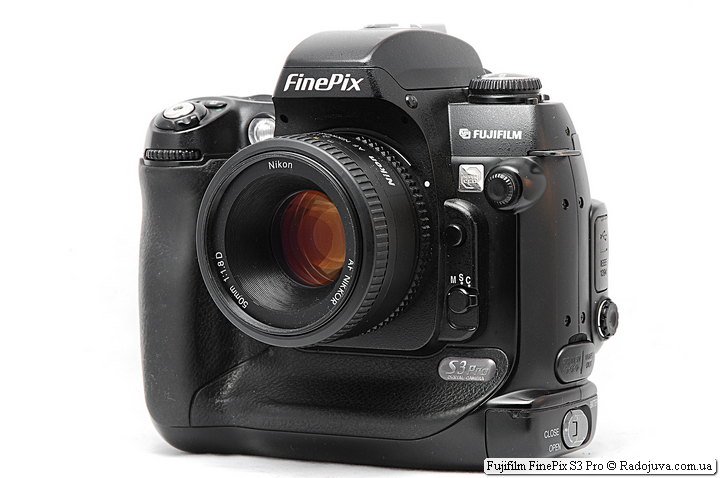
Fujifilm FinePix S3 Pro with lens Nikon 50mm 1: 1.8D AF Nikkor (MKIII)
Results
Nowadays, the Fujifilm FinePix S3 Pro is considered a morally obsolete camera. But many true artists photographers appreciate it to this day because of the unique sensor with a large dynamic range and pleasant color reproduction. This is one of the few cameras with which you can immediately get a wonderful result when shooting in JPEG format, without long dances with a tambourine over the conversion and processing of RAW files. For leisurely creative shooting, especially for portrait shooting - S3 Pro is a real find, especially since it is very cheap. Indeed, newer Fujifilm FinePix S5 Pro in almost every way better than its predecessor.
Comments on this post do not require registration. Anyone can leave a comment. Many different photographic equipment can be found on AliExpress.
Material prepared Arkady Shapoval. Training/Consultations | Youtube | Facebook | Instagram | Twitter | Telegram

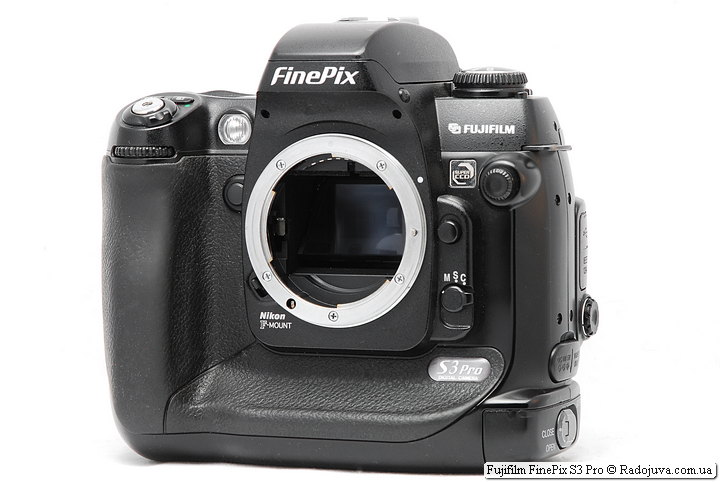
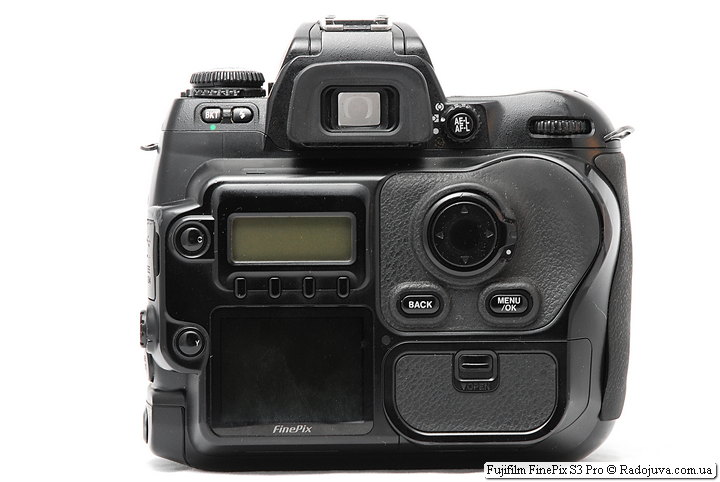
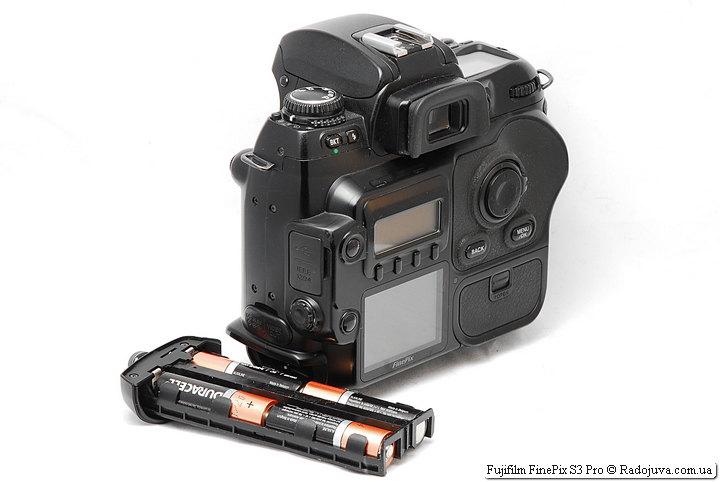
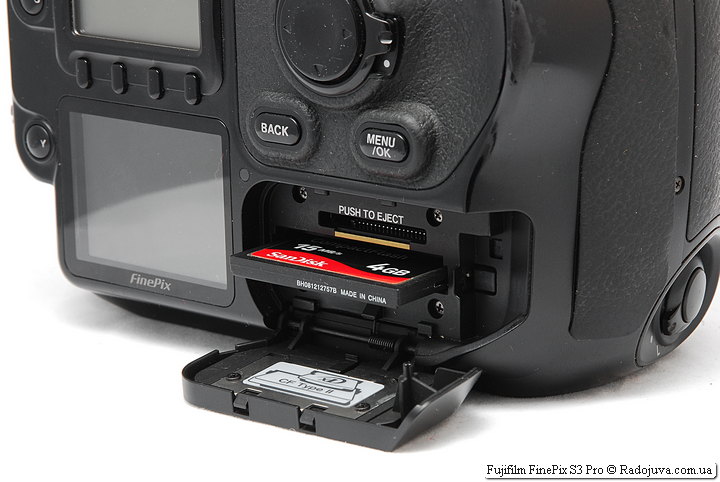





























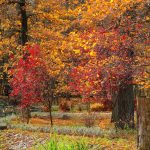






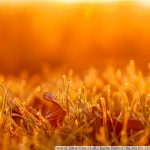


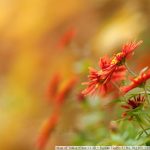




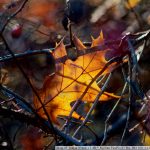
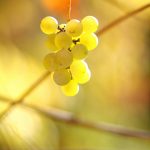


















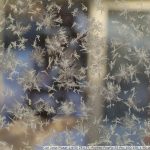





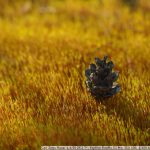




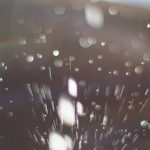

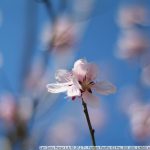









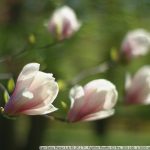

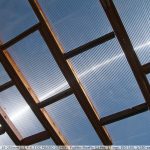



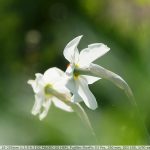
















Thanks for the review, I waited so much for it! Arkady, please post the archive with uncompressed RAWs, preferably as much as possible so that there are files, it is very interesting to twist them in the editor (as I understand it, you posted only). Thanks!
for the sake of curiosity - how much will you sell this miracle?
I'm sorry, I didn’t see that there are ravines
lucky owner of Fujifilm FinePix S5 Pro :) the camera pleases with soft and wide color dynamics :)
one of the frames from the Fujifilm FinePix S5 Pro camera https://500px.com/photo/67639343
We drag on the site a review of the "sink" with a bunch of examples there is a long time ago
Many thanks to Sergey Gordubei from Evenkia for such a gorgeous gift to Arkady :) It becomes more fun when you see that there are such generous kind people, and that not the whole world is still saturated with envy and anger. The camera, although old, is mega cool, and the pictures of Arkady proved it. The color is wonderful, the detail is plentiful, perhaps the only drawback is tricky controls and noisy high ISOs, but for serious reporting in the dark there are other monsters. But for portraits and street photo shoots, this camera is the thing with its gorgeous Fuji color. An excellent review of Arkady, which once again proves that "Brother's strength is not in the carcass, but in the arms growing from the shoulders."
that's who you need to learn from the modern nikon in terms of color reproduction ... thanks for the gorgeous review.
I am the owner of S5! She would have had more detail and intra-camera adjustment of autofocus - she would have no price! After that I would take Canon, something from Markov. Modern Nikon is not happy in color. But I will leave the old woman S5 anyway, the portraits from her are gorgeous and without any processing!
Well this is necessary ... just a break in the template ... official propaganda suggests that Muscovites ate bacon, and they give DSLRs! I want too. Two!
Come to the Donbass :) Collect the DSLRs after the battle, you will be two and ten :) Japtehnika does not burn in the fire, does not sink in the water :))
Learn how to make money yourself, and if only you can acquire the most ancient professions (INQUIRY) from manhood, one name remains
Thanks for the review, Arkady!
For a long time I suspected that the cunning Japanese were hiding something interesting from us for the sake of the market ... So I retired, left the newspaper and I developed a craving for such a leisurely witchcraft with large carcasses. Honestly, I'll change some of the FFs for a cropped fine pixel with a three or five. And I will be happy))))
Great camera. It is very pleasing to work with such ancient monsters, at once some feeling, as if you are conducting excavations. And you wonder how great they did it before, why many of the old developments have no continuation now. Why can't we release the same fudge pro, but ff and with ISO 3200 workers - after all, they would have fought for it in stores even at a price of $ 2000 :) and other reviews, d80 / d80 are not much worse.
because these are the features of the SSD matrix - they left it because of the noise on the ISO above 400.
Well, yes ... But imagine ff on ssd with a huge DD! Well, they would have released for high ISOs, for example, 5d mark 4 and separately 5d mark 4s for ssd for work in good light :) There was a case when two phagemans were released, one for the studio and one for reporting. Here in the studio you could shove the ssd. There are just a lot of people who regret the lack of ssd in modern DSLRs, judging by the forums - a whole niche in the market is not filled. Fuji really fill in their BZ ...
Hasselblads for ssd, pentax 645 d for ssd. Actually, the studio has something to shoot. And let the running cameras stay on the CMOS. Now everything is on business - if you want efficiency - take canonnikonsoni, I xs that. If you want DD, color and resolution in 1 bottle - forget about ISO 800 and higher and shoot on digital SF. There is no money for the Federation Council and the color does not suit - the film. And trying to sit on 3 chairs won't work. Cameras with good color, size and price don't exist, as well as cheap universal bright zoom.
And the protyreshki, the heap, d80 and d200 have bad colors at all? In my opinion, here it is a cheap option with good color and size. But why not bungle a ff matrix at an adequate price with this technology, that is the question. SF is a completely different kind of money, it is not a mass segment, and ff for 100 thousand for a loan could become quite a buyable product, in my opinion.
I think the camera for 3 pieces of bucks with ISO 400 will not take a maximum. On the water and others like them, the colors are normal. Yes, it’s normal, not awful. People will not pay for a half carcass ONLY because of its colors. Well, at least I would not take it. In the battle with the third dime and eight hundred, the latter will win in 95 percent of cases. Too niche product will come out
Well, they buy the medium format. And more expensive 10 thousand bucks. And it will be something simpler for beginners :)
matrices just switched from SSD to CMOK because SSD matrices did not work quietly at high IFRs.
Only one seedy company remained - Leica! Yes, expensive professional astrocameras are still made on CCD! And the rest of the "super-duper" have already switched to CMOS long ago. It's funny, isn't it? It's all about cheap (read - cheap) technology, but not the ability to increase pixels in CCD for marketing !!!
I will correct a little, not "increase pixels", but increase the number of pixels.
Good day to everyone. Survey worthy of Radozhiva, well done. The only thing I didn’t understand was the delight about the picture quality of this camera. I didn’t notice all the photos of the masterpieces. Ordinary good-quality photos that can give out mirrors of any manufacturers. The skill of the photographer has not been canceled yet, and the technique is just a tool. In short, a well-shot frame by any camera, plus processing, can compete quite well, because digital processing originally includes post-processing, without which it is extremely difficult to produce a decent result.
Dear Lera, the beauty of ProTroika is that its JPEGs can no longer be processed, unlike modern super-sophisticated cameras. Well, yes, - slowed down, well, yes - an anachronism ... But they correctly noted that this camera is for artists. It's far from reportage. And for reporting - you need empty-flowered rapid-fire….
If you carefully read my post, I am he, not she. I just didn’t see what I admire in the examples. The CCD matrix was always better in color rendering than CMOS, but in difficult conditions it loses in noise, although I really like the picture from S5 here is an example https://fotki.yandex.ru/users/olegvanilar/album/94530/
you're right.
there is an excellent site in Japanese where there are full-format paired shots of Nikon D200 and Fuj. There is no global color difference. 90% of the enthusiasm for Fuja and the triple is the chamber LPEG. he's great. pictures should be processed to a minimum.
If you look at RAV, then Nikon and Kenon and Sony give out no worse color. but they have much better detail.
more time is spent but the result is better than that of Fujah, at least at the expense of permission.
6MP is still very small.
Fuji is not suitable for a portrait painter, there is no exact adjustment of the AF, so the problem with the depth of field is guaranteed.
Fuji is not suitable for a landscape painter, all the more, because there is a very low resolution.
a camera for lovers of “those times” when the sausage was 2.20 each, the grass is greener, slow cameras with poor autofocus :) and Egyptian chariots instead of cars.
"Nikon D4s, introduced in February 2014, loses out in dynamic range to the ancient 'wooden' Fujifilm FinePix S3 Pro"
And the D7100 bypasses both of these cameras. So what? :) But in the same test it is clearly visible that with the color rendition there everything is not as good as they say. Moreover, according to this indicator, the same D200 bypasses it. And you won’t be full of one DD.
All this only confirms the fact that Fuji knows how to write such signal processing algorithms that the picture in the end looks very “delicious”, even from the matrix, which is not enough stars from the sky. For some reason, DXO hasn't tested modern x-trans cameras.
look at the curve of DD from ISO on DxO ... fujiki c3 and c5 are the only ones on the planet that do not lose DD until iso800 !!!!!!!!! how do you like that? and there are also rumors that they measured dd fujs when setting dd100% instead of 230 and 400, which are in the camera settings. just so as not to frighten the Nikonokanon breeders ...
legends are not for sale! :)
mirrorless Fujifilm X-Series when you will review! Owners write boiling water, so everything is fine there)
Fuji is something like an iPhone, but in the world of photography. Beautiful, stylish, but functionally android is better and cheaper :)
Alexei, do you personally have Fuji on hand now?
According to the comments I see that you were like S3pro, S5pro, but what years are they? Try the new Fujifilm cameras in action, just try not at the storefront, but take them for a week or 2. I have been using Fujifilm X-E2 for about 2 months now.
And I noticed:
1. D3s has been on the shelf for 2 months now.
2. I stopped shooting in RAW because in Fujifilm X-E2 it’s sooo good JPEG.
3. Manual focus in the Fujifilm X-E2 is 15000 times more convenient than in ANY DSLR.
4. The fact that Fujifilm has slow autofocus is written as I noticed mainly by those who do not have a Fujifilm camera at all, that is, those who did not shoot on Fujifilm but simply believe the word for synthetic tests.
5. Fujifilm X-E2 with a Fujifilm 27mm f2.8 lens is more compact than any DSLR, which means that I ALWAYS carry it with me, even when I go to the store, so I began to REMEMBER MORE than sitting on forums and processing, and began to shoot a lot interesting things that surround us, began to think more about the composition.
6. The only thing the new Fujifilm cameras are not suitable for is the landscape.
First, all of America, and now after it, Moscow and Sochi WILL ALREADY REMOVE WEDDINGS and PHOTOSESSIONS on Fujifilm X-T1, so I think that EVERYONE will pick up this trend, because there is no desire to drag bricks like Nikon D3s for the sake of photo quality similar to Fujifilm X-E2 .
I personally have no fuji in my hands right now. Let's go through the points.
2. According to the law of meanness, that one frame, which is the most valuable or necessary, the automation will screw up. And in any case, you need to pull light-shadows from the rav in post-processing. And about “a very good shot” can be said, in fact, about any modern camera, and if you shoot “for the house, for the family,” you really don't need a camera, enough time. Although Fuji is good, I agree.
3. Manual focusing in any focus-peaking camera will be better than any DSLR. Fuji is just one of the. Micra, NX, Sony E and SLT, Pentax in Live View - they all have picking.
4. Let's just say that he does not break records.
5. And Samsung NX300, for example, with Samsung 30mm f / 2 - is even more compact. And lighter.
6. The horror.
You can shoot anything. And they shoot for anything. I saw how in the registry office they were filming a video on some gloomy ancient video camera. And nothing, everything is ok. I also saw enough “photographers” who filmed the same weddings on entry-level DSLRs. If you know how to sell yourself and your services, clients will not care what you rent. At least for the same iPhone. If the result is “wow,” technique doesn't matter.
PS It's great that you are so happy with your camera, but don’t write more such epic nonsense as in the last sentence. It immediately becomes clear that you are a "fanboy" :)
Unique camera! Above all praise! I sold it two years ago and I regret it very much ...
Well, there is also the opportunity to buy and rejoice! At the same time, help the project;)
I've been looking for the fourth month in Minsk - it's not on sale yet, before there were three or four proposals for this camera ... Apparently the photographers appreciated the camera!
a lot of these cameras die, the feature of the Super SSD matrix is that a sea of dead pixels is formed there even if you do not use the camera.
triples are unreliable in mechanics, the mechanism of raising the mirror, shutter, etc. often breaks down. On the other hand, they are assembled from two or three or more, put a more or less living matrix and sell as restored.
Google with a translator German sites, English - everything is detailed there and on the forums there are many complaints about matrices and breakdowns.
Get rich, send Hasselblad for the test :)
"Nikon D4s, introduced in February 2014, loses out in dynamic range to the ancient 'wooden' Fujifilm FinePix S3 Pro"
Here is an interesting link too http://www.dxomark.com/Cameras/Compare/Side-by-side/Nikon-D4s-versus-Nikon-D600-versus-Fujifilm-FinePix-S3-Pro___945_834_528
It's not about CCD - CMOS, but about approaches. The Kodak SLR and Sony A900 are CMOS, but color is magical.
firstly, a full-format camera on this technology was made, but did not go into the series due to the fantastic cost and low reliability of the matrices and problems with its overheating. matrices on ghouls and triplets pour in, google.
specifically, the triple has a problem with the reliability of mechanics, there are many nodes inside made of thin plastic. with active use, triples often break.
The problem has been fixed.
total:
Super SSD technology achieves good color and halftone by reducing picture detail. in fact, ghouls and triples are 6MP cameras and many developer programs understand them that way. correctly developed RAV weighs 75MB in TIF.
super SSD technology is much more expensive than usual in production
super SSD matrices "pour" much more often than usual ones and the percentage of defects in production is higher
Super SSD matrixes are very hot, not suitable for video.
The market put everything in its place.
I had Fuji three, uncomfortable, slow. I sold it, I bought it. The problem with all these Fujis is that there is no precise AF adjustment. 6MP, their actual resolution is frankly small, at least 16MP, there are no details.
The most important thing is that the pictures for the same Mark 2 are almost indistinguishable in color from the fuji or Fuji three. and after a little tweak in the editor in a "blind" test, even a super fan of old Fuji from can not distinguish from Kenon. I sold the heap quite recently, sold it for a long time and asked for it inexpensively :) until I found an amateur.
Did you know that all matrices are black and white? :) And the matrix cannot have a “color”? :)
A lover not from the Far East?
in particular, the troika has a problem with the reliability of mechanics, there are many nodes inside that are made on thin plastic. with active use, threes often break ... yes, but any mechanics on any DSLRs breaks, and everything is treated by replacing the same mechanics from Nikons F \ N 80 or D100 ... so the problem with mechanics is not global and can be solved. Another thing is the matrix ... so it can cause problems ...
Ordinary photos with good color. Having set up the Nikon D 7000 camera, we get in JPEG no worse, only with better resolution. I’m thinking how many people there are. To change the modern camera to this?
... color is a very subjective concept ... if you take a raw file from the nikkor 105 review and twist it a little: https://cloud.mail.ru/public/5dadf62aeaa5/1.rar
PS. there is no point in buying a specially old camera. better take a modern Nikon on your budget. and it would be better 810. and all the "warm lamp" colors - in a raw-converter + photoshop + plugins. the main thing is to have a good monitor and a straight eye!
As the owner of pro5 and Nikon d7k, I can afford this comment. The main advantage of Fuja is the CORRECT rendering of color transitions, color preservation, when working at high (for Fuja :)) ISO (1600). I also really like grain (film), especially when transferring the card to bw. Whoever writes that he can modify the color from modern cameras to the level of Fuj, most likely did not hold the camera in his hands ... You can get a result that is acceptable in color from the Fujian rav, you can use ONLY the native utility (photoshop, lightroom are not suitable), which will give the correct 12 megapixels ... Yes, the detailing is not a fountain at the present time, but I'm wondering: do many of you print photographs larger than A2? concepts are not compatible!), and in color. On Nikon I shoot “everything else”, on Fuj-only people. Everything IMHO.
Plus Vitaly U.
I agree with all that has been said. Especially about megapixels.
Which have recently been needed by EVERYONE, even schoolchildren are bombing weddings on Saturdays on the D800 (despite the fact that they DO NOT print photos on paper AT ALL, but all as one say “12 megapixels is EVIL!”). I think that 12 (yes what there are 12, even 8) Megapixels but with a really working ISO 6400 like the D3s is enough for ANY situation.
I noticed that Fuj was being blamed mostly only by those who read synthetic tests and did not hold this camera, either kept it for 5 minutes by force, near the window, or took it from a friend. Even Fuj from this review is a very powerful camera !!! Not to mention the new OLCs like Fujifilm X-E2, Fujifilm X-T1, Fujifilm X-PRO1, Fujifilm X-30, which are placed on the blades of monsters like D3s in all respects except for autofocus speed. In general, Fuji-force, Nikon-grave. Fuji has White Balance, and Nikon has Yellow Balance :) Everyone has peace !!!
Sashko, about the balance of yellow: it depends on which nikon. I had a D90, it had a blue balance. But a small manual correction in warm colors was enough to achieve a good result. But the very fact of constantly digging into the settings infuriated me incredibly ...
In D3s there is also a BLUE BALANCE, I always have the A5 amendment, only in this case you can close your eyes to the BB, but this is not normal when A5 is always on, not for the same I took D3s to do so many movements for my he should take off the price himself :) But D300s, surprisingly without corrections, ALWAYS gives the correct BB, but there the ISO is not to hell. So you have to shoot on Fujifilm X-E2, because the color there is 100500 times tastier than in all Nikon's combined. Maybe I'm wrong. But this is my personal opinion, which has developed from 3 years of ownership of almost all Nikon brand cameras, and 2 months of ownership of Fuji X-E2. Moreover, the anonymous authors DO NOT see the color difference between fuji vs nikon at all, which means that there really is NO difference, and Arkady specially praised Fujifilm S3 Pro here so that he could buy it sooner :) Here is the naughty guy :) And I was told that fudge is better in color than nikon.
“And Nikon has a Yellow Balance.” That’s the opinion of such singers as you, who recently ascended the D300S to heaven, I don’t listen to. , I state the fact that I don't see anything special in flowers compared to my Nikon.
dear, but can you tell me where to get this very native utility? I would like to work in it ... I did not find it on the neta
Fujik ours in heaven!
Hallowed be thy brand
Thy mirrorless kingdom come
Let your color be
Both on Canon and on Nikon;
Our daily jpeg give us this day;
And forgive us our RAWs,
As we forgive our mirrors;
And don’t bring us to the photo forums,
But save us from processing.
Fu Jin !!!
... now with this "prayer", I will get my "ProTroyka" out of the trunk)))
I'll drop it to Anonymous. In order to speak about “color / not color” here, you need to conduct a “small” experiment: buy Fuja and compare PAIRED PICTURES FROM BOTH TESTED CAMERAS on YOUR MONITOR !!! What are you whispering about: “the color is not impressed” ... Learn materiel, do not disgrace yourself.
Materiel, my categorical friend, is not from that opera. It was you who would suggest to Arkady to take paired pictures in this review, and not to me. And without this, the review is not complete. I have already offered this to him more than once to compare lenses in particular.
You, my perfect friend, create your own resource and do what you want on it (de giving advice to Arkady). I took paired pictures (Nikon / Fuji) and I APPROVE that the color of Fuja is better (it is COLOR!). And you say what you want, I’m PB.
Guys, this is just my device, which I gave to Arkady. Thank you all !!!!
I'll drop Sasha Fujifilm ... Well, you don't need to blame Nikon so frankly. There are several good methods for BB: turn on LV and a picture appears on the screen, which will be in the image, sneak the BB setting, select the one you need ... Just in case, I bought a gray cover, I put it on in difficult conditions without problems. There would be a desire. The future, in general, may be for iPhones - who knows ...
Vitaly, yes I know all this, about Live Wiev on Nikon and all that. But agree that it’s annoying that I put AUTO BB on Fujifilm X-E2 and get excellent results in JPEG, but on Nikon D3s that costs a lot of horse money, I have to conjure EVERY shot when shooting or processing. On Nikon, I think more about settings, but on Fujifilm X-E2, I only think about composition. There is some kind of magic in Fujah anyway. This cannot be denied.
“O shame! about the horror of our days! The Janissaries have invaded like beasts! .. "
It’s better to compare srau iPhone with D3s.
Hammer. He is an alfasamets!
First, he brought d300s to heaven, like everything else is garbage and only three hundred are cooler than everyone else, then d3s, now his fujik is the coolest.
Then some other camera will be the coolest for him ...
Lynx, well so if Nikon himself says that he released the defective D600 which threw oil on the matrix, and now released and again recognized the defective D750 which, when shooting in backlight, the frame of the frame blackens, it just remains to praise the ancient D300s and D3s :) And Fujiki :) Nikon doesn’t release anything good. Only defective news feeds everyone.
It does not blacken, but brightens, and not the floor of the frame, but a strip from above. Do not write. what you don’t know.
Blackens, brightens, what's the difference. On the face of two consecutive buggy models. Nikon rots :)
Still remember the buggy SB-900, replaced by 910 :)
To the point of Arkady. And to be honest, laughter is laughter, but is that normal? To produce so many defective products?
Let us recall the problems with the D750, with Nikon 1, with the latest lens 300m, with the D810, with the D800 (e), etc.
by the way, when removing the problem of illumination on the d750, the AF points malfunction, and the carcass actually requires factory adjustment, which in Europe is only possible in Dusseldorf ... and meanwhile, the operation to treat the flare is done on the spot by local craftsmen)))
stop scribbling here